|
|
 |
|
|
How to Fight and Win With Crunchies in Flames Of War
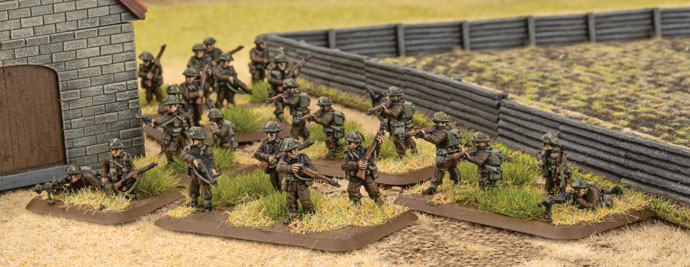 |
How to Fight and Win With Crunchies in Flames Of War
with Garry Wait
As someone who grew up working in an armoured unit, we used to call foot sloggers “crunchies” to describe the fragile nature of infantry and their two legged supports. Sure, they are less glamourous and slower than the glory boys of warfare, the tank and other armoured vehicles but it’s very viable to fight and win with a trackless army.
|
| Although I’m new to the latest Flames Of War, I used to specialise in trackless armies in previous editions and although the rules have changed, the principles haven’t. That said, I heartily recommend the strategy I outline below and have used. I do find some armoured support can make all the difference though as a mobile force. |
|
So when I say “How to Fight and win with crunchies”, what do I mean exactly ? Using D-Day or Fortress Europe forces, there are many formations such as German Grenadiers or British or Soviet Rifle Companies for example that have no tank or armoured units integral (I don’t count Universal carriers as “armoured vehicles”, rather anything top armour 1 or better as these can assault and are unconcerned with most artillery barrages).
|
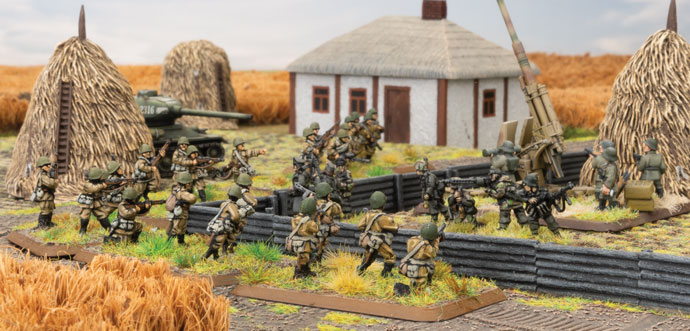
|
|
Most formations you build should have a focus on integral units with support units being just that – support for the main focus of your army which is your core formation. With that in mind, I try to build an army that is realistic and this means two or three infantry platoons backed up by mortars and HMG’s where possible. This gives you a solid core and is beyond the scope of this article for sensible game play.
|
|
But as many armies such as South African infantry in North Africa in World War II found that running without armoured support and insufficient AT assets could mean you end up as a speed bump for those vaunted Panzers. Fortunately, their nemesis, General Feldmarshall Erwin Rommel had a solution that he demonstrated time and again to be worthy. This strategy was called “Schild und Schwert (shield and sword)“.
|
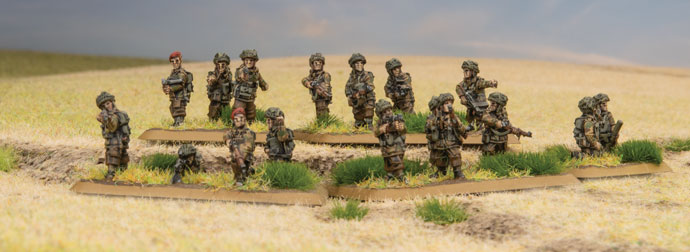 |
|
In practice, this was used in North Africa in Battles such as Gazala where the Afrika Korps would have supporting units of infantry and antitank guns and Flak mutually supporting to wear down the attack of enemy armour. This forms the “schild” or shield that protects your force and is the relatively static defence.
|
|
Backing this up and used to not only take care of any breakthroughs that may leak past the shield but also used to push through once the enemy has been drained of their offensive energy is the “schwert” or sword. In the Afrika Korps this was the Panzerwaffe such as Panzers II, III or IV and later in Panzer Armee Afrika, it would include the Panzer VI Tiger.
|
|
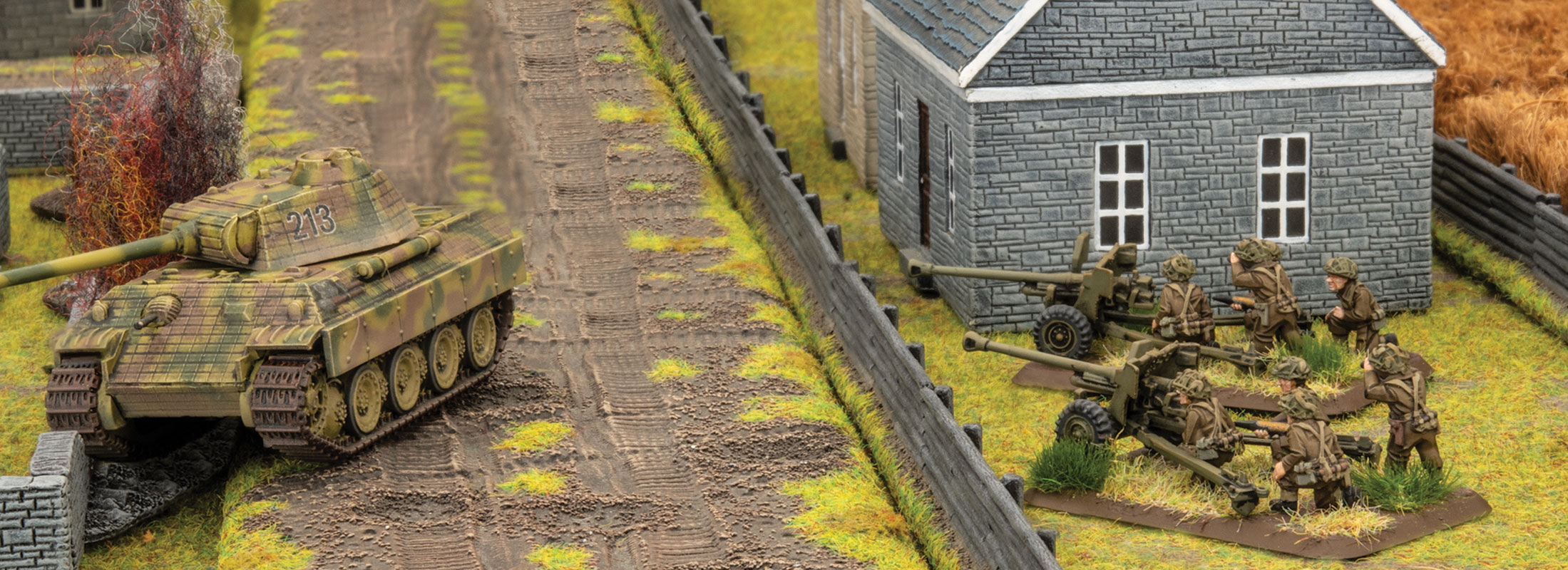
|
The thing is that this Sword doesn’t HAVE to be a tank unit, although for a faster and more certain result, a unit of quality armour is beyond powerful. Examples are Stugs in German armies, Cromwells or Shermans for Allies that can provide shock action. When I play I also find panzergrenadiers or even lowly “Landser” grenadiers can be very effective sword units. The key is to pull the teeth from the enemy’s attack by blunting them with interaction with the shield you have.
|
|
This is achieved by a combination of solid defensive troops and using AT guns as an offensive weapon. That may sound a contradiction in terms, describing AT guns as an offensive tool. However, when sited properly and using Spearhead where possible, AT guns and their zone of control they exert can be incredibly powerful. Consider the terrain you have in your game and the avenues of attack to face from enemy forces and how to make the most of your lanes of fire.
When we sited Sustained Fire Machine Guns in Army service, we would have a “range card” which indicated the radius of the SFMG and the ranges they could be effective to. So when there was a change of crew, there would be a description of what areas the MG could impact the battlefield.
|
|
Flames Of War is no different. Think in terms of how to site your AT guns crucially for how they can channel your opponent and deal with the enemy’s assault. Ideally you will have a tank unit waiting in “on table” reserve to be a ready reaction force but the main fighting is to be done with the AT guns, supported ably by their infantry brethren.
If you only have one tank unit (with armour 1 or better on top) then you can and should look to have this as a first responder and save it for any possible breakthroughs or to clean up after your AT guns have mauled the enemy’s attack.
|
|
NOTE that I am NOT recommending infantry formations as a defensive army! If you think that the incompetence of siting back and cowering in your foxholes you not only surrender the initiative to your opponent, you also deserve your boredom and time outs. Such strong infantry formations should be following the Australian Defence Force’s definition of Infantry in my humble opinion :
“The role of the Infantry is to seek out and close with the enemy, to kill or capture them, to seize and hold ground, repel attack, by day or by night, regardless of season weather or terrain.”
So what’s a sample force look like and how would it work ?
|
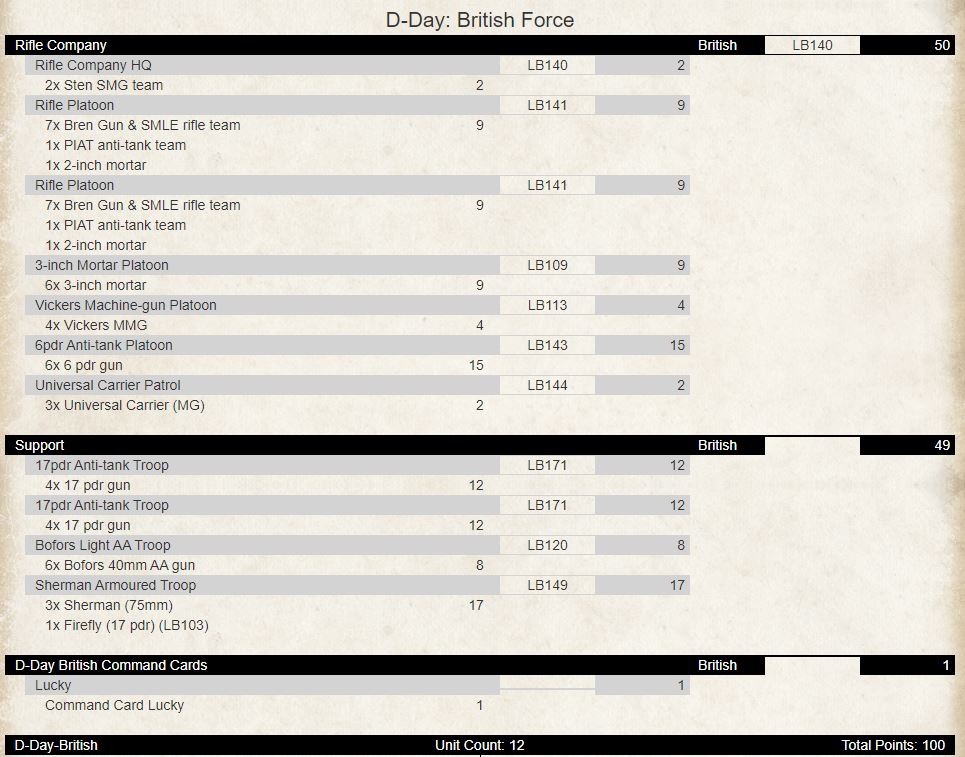 |
|
(these are excellent for Spearhead and as a light Ready Reaction Force to counterattack infantry attacks)
All of the above is 50pts. That’s half of our usual 100pt game we use downunder.
|
|
So to break the above, you need to badly tear up a LOT of 3+ saves, which is ALL the two legged units above. Only the carriers are “soft” with an easy kill and everything else is going to be very hard work to shift.
In support of the above, I personally am a big fan of the following :
|
|
In support of the above, I personally am a big fan of the following :
Two units of four 17pdr AT guns (put one on each objective where possible, spread out to minimise artillery effectiveness and using terrain to keep them concealed where possible)
One unit of Three Shermans and One Firefly (keep this in reserve and they are the cavalry to come to your rescue when the enemy has been wiped out by all those AT guns)
|
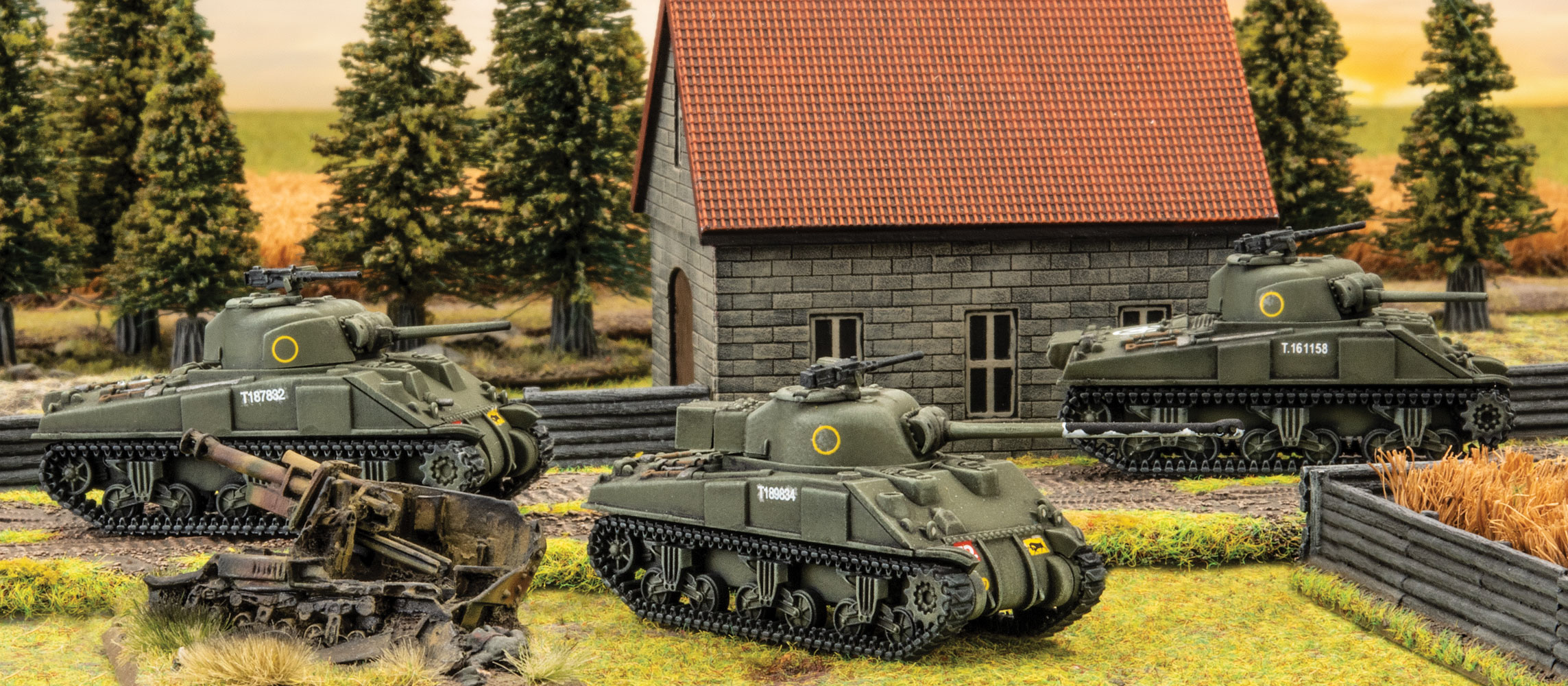
|
|
One unit of six 40mm Bofors AA (These are excellent not only as AA but for chewing up enemy infantry and light armour with AT7 to mess with the incoming attack).
Lucky Card (because everyone who plays me often knows I need this one !)
This adds up to 100pts
|
|
|
Some golden rules :
- Never assume one unit is sufficient if two or even three can be assigned to protect an objective. Supporting units are an order of magnitude better than single units unsupported.
- Don’t forget to use smoke. You should fire this once a game without fail if you have it available. Use it to reduce return fire upon your AT guns.
- Make sure you have your OC (Officer Commanding your force, or Formation Commander) close by at least two or three units within command range to help with rerolling of unpinning. Hiding in the rear in a bunker went out with the Battle of the Somme and has no place in Flames of War ! I lose count of how many guys I see lose games because
- Time your counter attack carefully, don’t expose your tanks too soon. Similarly don’t move your infantry out too quickly but rather look to have them act decisively when defensive fire for their (inevitable) assaults has been diluted enough to make it easy for them to ask enemy tankers to “hand over the keys to their rides”.
- Remember to allow for the abilities of heavier guns at longer ranges by siting these further back (17pdrs) and lighter guns further forward (6pdrs). Ideally you should have interlocking arcs of fire for your AT.
- Prioritise before the battle one objective to have stronger defences – ideally this should be the forward objective and allow for enemy to have to breakthrough your strongest defence to get to the second objective if possible. I acknowledge different missions have different limitations for you.
- Because of the limitations of different missions, make sure you PRACTICE lots of different missions. Even if it means choosing one you don’t fully know or aren’t comfortable with – get out of your comfort zone. Remember the old German saying – “Sweat beats blood”, meaning that practice before a tournament beats being bamboozled in a tournament with a mission you have only played once or twice before.
- Don’t underestimate the power of aggressive infantry. It can surprise many a player when they see Beach Grenadiers assaulting enemy tanks – especially if you can do so in difficult terrain and force the enemy to make many cross checks they hadn’t bargained upon. This is every infantry commander’s dream – to capture enemy vehicles without loss due to a panicked driver throwing a track suddenly. I have won tournaments with Beach Grenadiers assaulting enemy tanks – once the preparation from their supporting 88’s have reduced defensive fire to a manageable level.
- Even the lowliest unit can be helpful. I played a game recently where I took an objective with a Soviet mortar unit. If it’s mobile and not an independent unit or a transport, it’s capable of holding or contesting an objective. Don’t underestimate the ability of a unit to threaten the enemy’s control of an objective if you need it badly enough.
- Similarly, don’t ever assume that your one unit of infantry is enough to hold that forward objective. Back it up with AT guns behind them but also within control of the objective. And if that’s not looking like enough, add some HMG’s. There is no overkill !
|
|
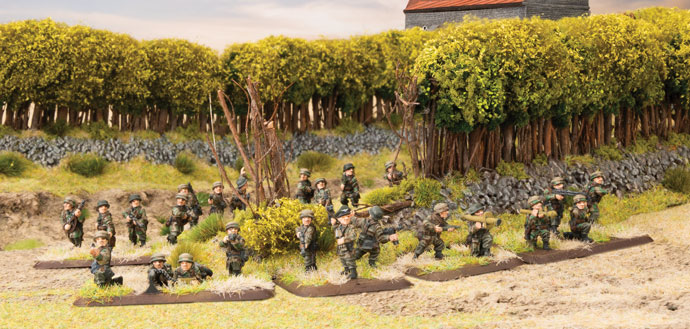
|
|
Most of all, have fun. There is no perfect army and no perfect players, only consistent and bold players who know when to launch that attack and when to bide their time. Experiment, practice, paint and improve yourself. There so much to learn and so much you can enjoy with this game.
|
|
|
|